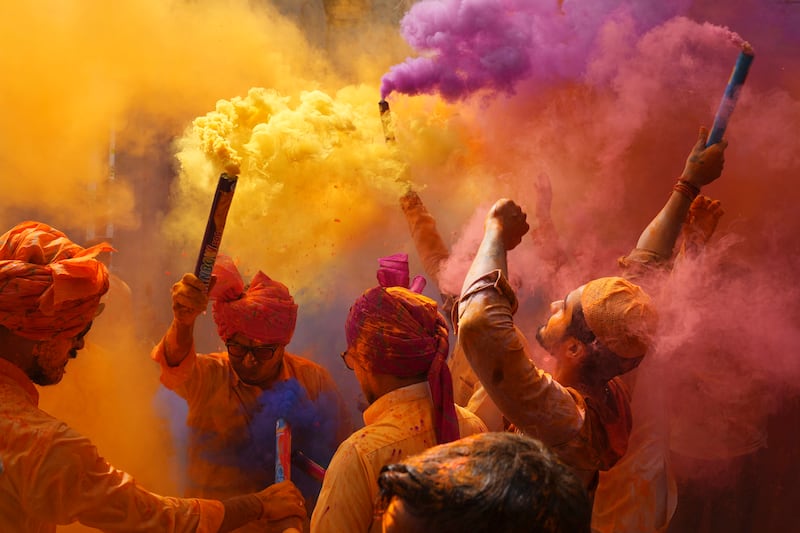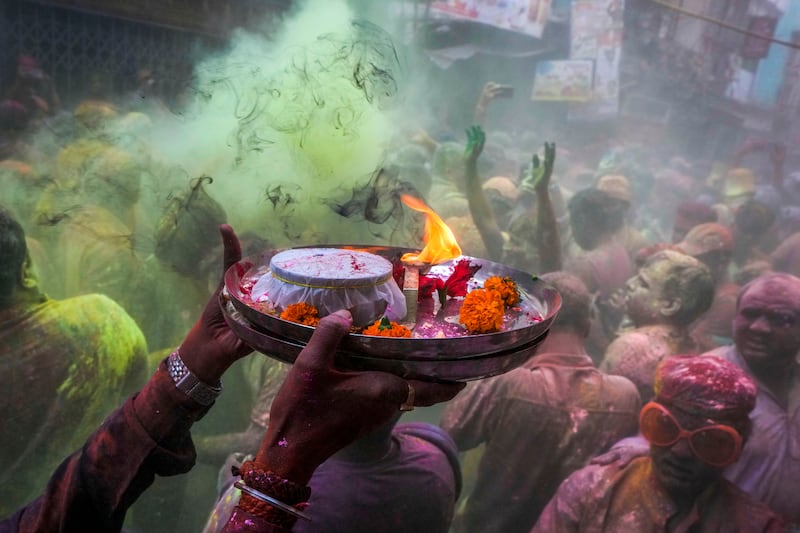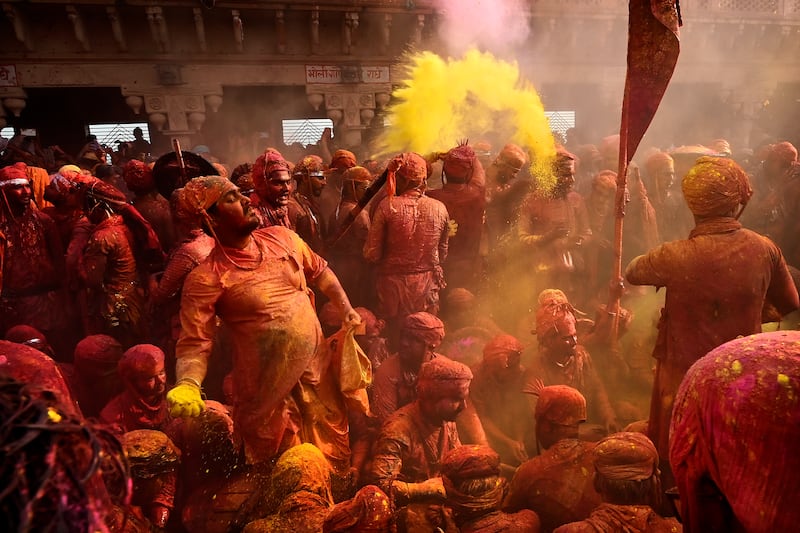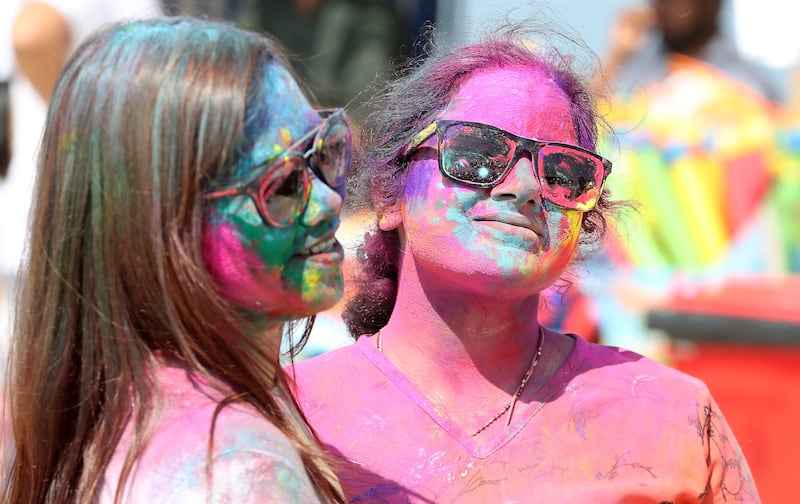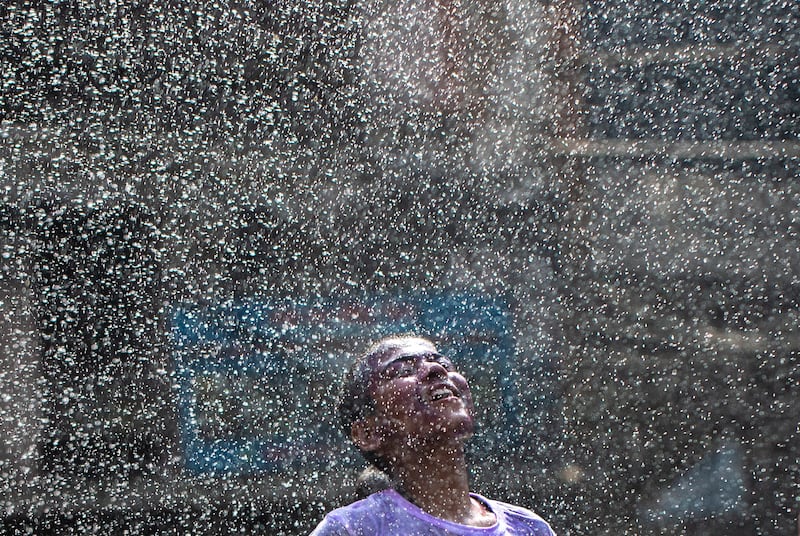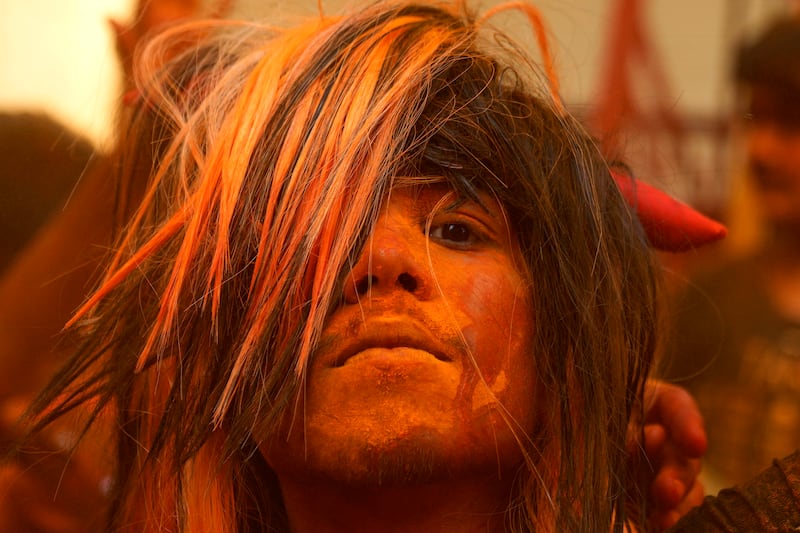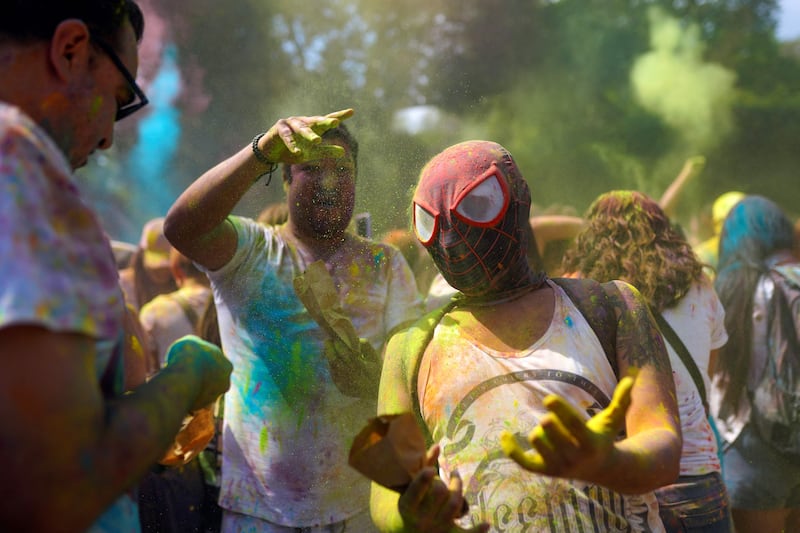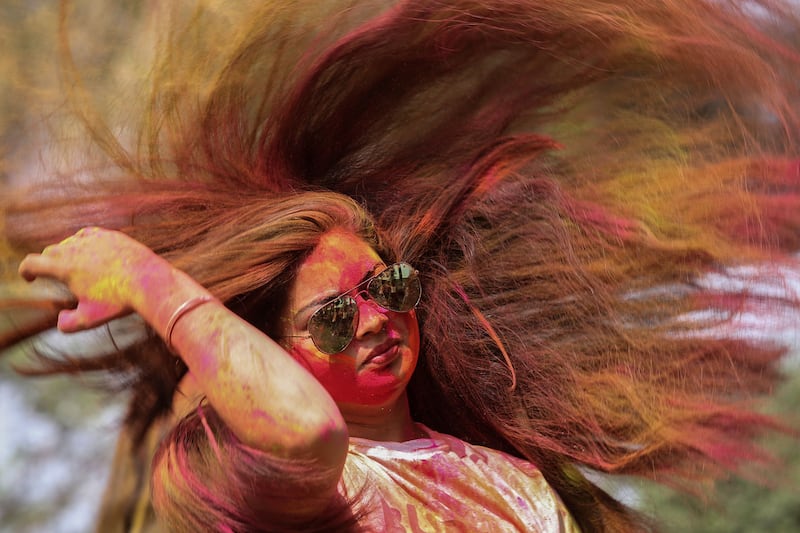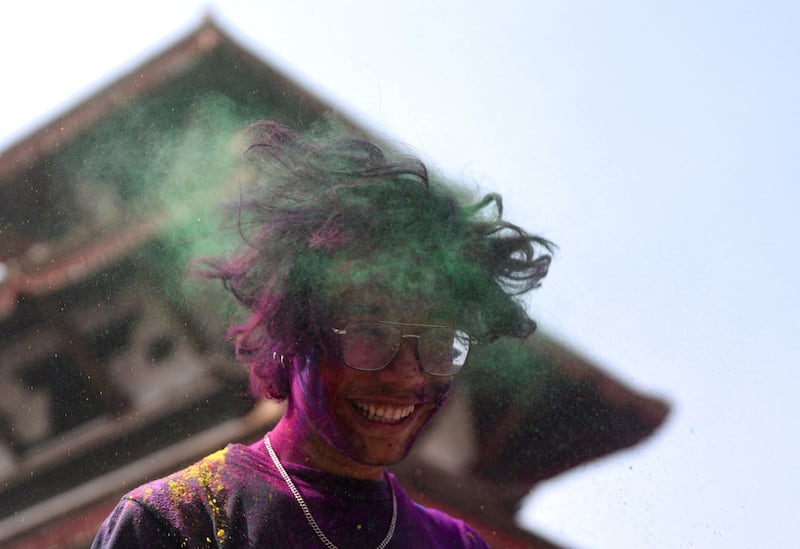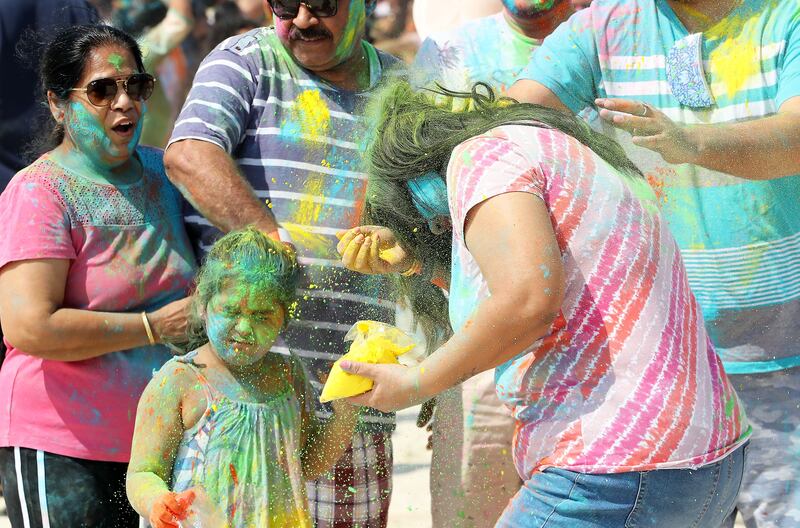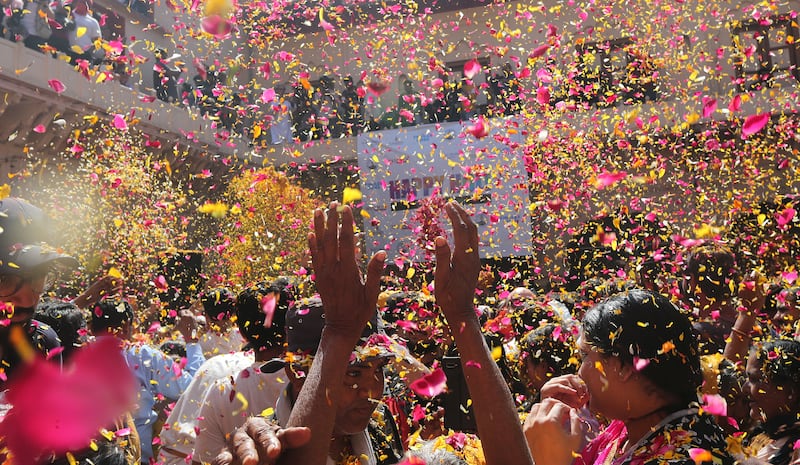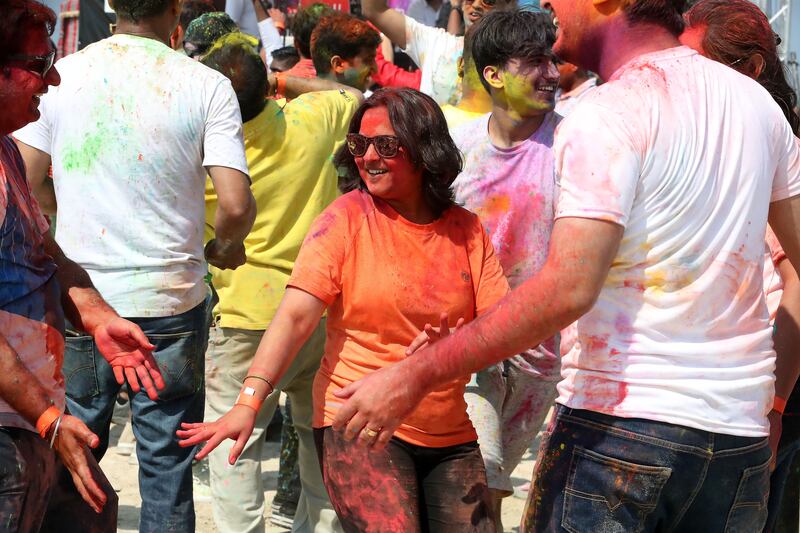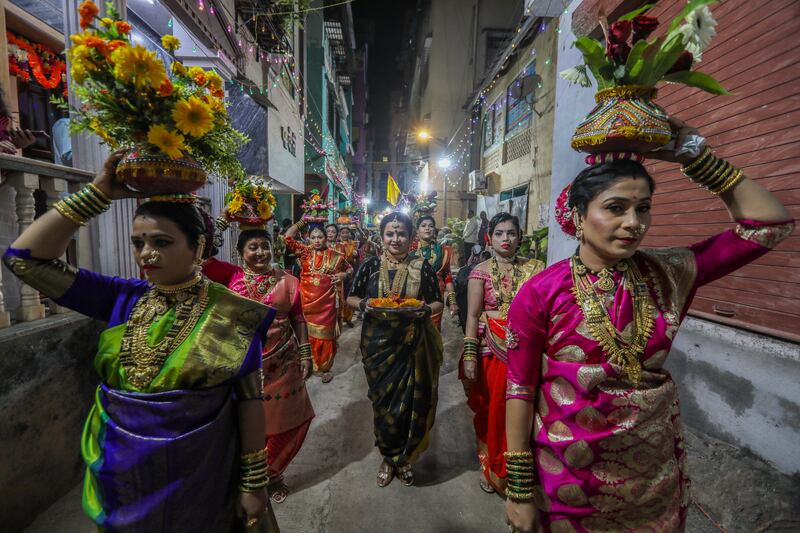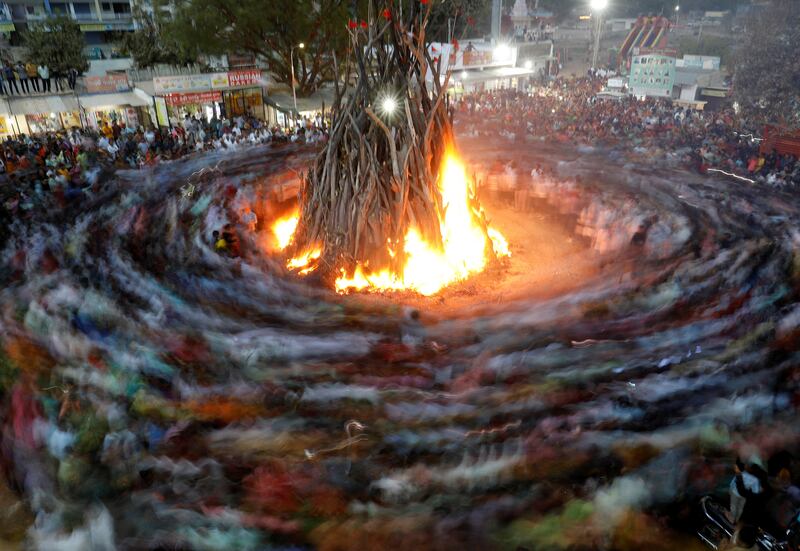Holi, the Hindu festival of colour, is celebrated around the world, marked by raucous parties where people throw and smear coloured powder on each other.
The festival, the celebrations for which begin on March 25 in many parts of India, signifies the arrival of spring and, for many Hindus, the triumph of good over evil.
Held in March on the full moon night known as Phalgun Purnima in the Hindu calendar, the date changes slightly every year.
While the first night is usually dedicated to more sombre rituals, it’s on the second day that the vibrant celebrations begin. Across India and Nepal, for instance, streets will be filled with colours as powdered dyes are thrown by people at each other and coloured water is sprayed for raucous fun.
Revellers are often advised to moisturise their hair and skin well, to avoid the dye from staining the skin and clothes worn do not usually survive the day.
The celebrations are deeply rooted in tradition and observed now for hundreds of years.
Where did Holi begin?
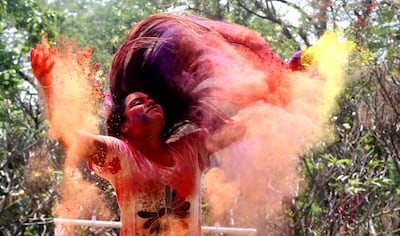
There are varying accounts of the festival’s origins but it has been celebrated in the Indian subcontinent for centuries, as documented in ancient Indian literature.
According to Indian historian Sushma Jansari, a faculty member at The British Museum, there are three main myths associated with Holi.
One of the most popular stories concerns the Hindu deity Vishnu and his devotee Prahlada, she writes on the museum's blog.
According to one version of this story, Prahlada was the son of an evil king named Hiranyakashipu, who demanded that everyone should worship only him. Prahlada refused to worship his father and instead continued to pray to Vishnu. Holika, Hiranyakashipu’s sister, grew angry at Prahlada because of his devotion to Vishnu and decided to kill him. She had been previously blessed by the gods so that she would not be harmed by fire, so she tricked Prahlada into sitting on her lap while she sat in a fire.
Prahlada survived this ordeal because he prayed to Vishnu, while Holika perished. Holi, the name of the festival, is thus derived from the name Holika.
In different parts of India and Nepal, bonfires are lit on the first night of the festival to signify the demise of evil.
Another story is linked to the god Krishna’s love for Radha, Jansari writes. Krishna’s skin was dark blue because a demoness had tried to poison him when he was a baby, and Krishna was worried that Radha wouldn’t like him because of his appearance.
His mother, Yashoda, playfully suggested that he smear some brightly coloured powder on Radha’s face. After Krishna did this, Radha fell in love with him and they were later married.
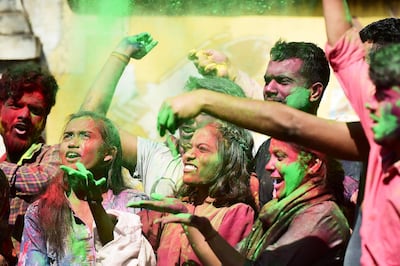
Some people also believe the Holi colours came from Krishna mischievously throwing coloured water on his subjects, which became part of the celebrations.
How is it celebrated?
In different parts of India, where it’s a national holiday, Holi is adapted to various cultures. In the state of Uttar Pradesh, for instance, women playfully hurl sticks at men, who use shields to protect themselves.
In parts of Punjab, Holi fairs are held and can go on for days, while in the north-eastern state of Manipur, young people perform a group folk dance called thabal chongba on full moon night, and celebrations usually last for six days. The fun and games with colours, however, are followed everywhere.
Holi is also a big festival in Nepal, where it is a national holiday.
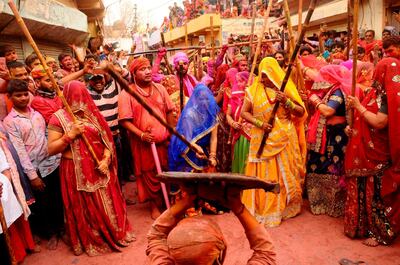
Holi in the UAE
Holi celebrations have gone truly global, thanks to the Indian diaspora. Colour marathons, where participants are doused with coloured powders, have become popular around the world. Some critics, however, say these events destroy the religious significance of the festival.
In the UAE, for example, the festival is usually marked by concerts and outdoor parties. This year, however, as Holi falls during Ramadan, many celebrations were held earlier in the month. Restaurants are also cashing in on festivities, launching special Holi menus and deals.
Here are some to try.
Colour Yoga at Taj Jumeirah Lakes Towers
The Dubai hotel is hosting a free colour-themed yoga session to mark Holi, which will incorporate colour visualisation meditation in a vibrant setting.
The event will begin at 4pm with colour yoga, followed by a sound healing session and then iftar at Shamiana restaurant, which serves cuisines from all four regions of India.
While the yoga event is free to attend, the iftar at Shamiana is chargeable, with participants getting 15 per cent off.
Shamiana is also hosting a separate Holi Brunch on the same day, between 12.30pm and 4pm, with packages starting from Dh185.
March 24; Taj Jumeirah Lakes Towers; 04 574 1111
Punjab Grill's Holi Menu
The fine-dining Indian restaurant is celebrating the festival of colours with a four-course set menu at both its Abu Dhabi and Dubai locations. The set-menu includes dishes such as Chilled Anari Dahi Bhalla, Kathal Masala, Phulka Tacos and Paneer Saffron Kofta for vegetarians. Mean eaters can look forward to Masala Shrimp, Reshmi Chicken, Saffron Chicken Korma, Saag Gosht and more.
March 22 to 25; Dh200 for vegetarians and Dh225 for non-vegetarians; The Ritz-Carlton Grand Canal in Abu Dhabi (050 668 3054), and Anantara Hotel, Business Bay in Dubai (050 194 1107)
Free thandai at Dhaba Lane
Known for its Punjabi food, Dhaba Lane will give diners complimentary thandai, a cold drink prepared with exotic nuts and spices, for Holi. This milk-based drink is flavoured with rose petals, dry fruits and spices, and is commonly associated with the festival.
The restaurant is also selling two gujiyas for Dh15, a sweet dish usually prepared during Holi and Diwali festivities. Shaped like a dumpling and made of flour, it is stuffed with roasted dried fruits, grated coconut and semolina.
March 24 to 25, all day; Dhaba Lane branches in Karama, Garhoud, JLT and Al Nahda; dhaba-lane.com
Holi set menu at Bombay Brasserie
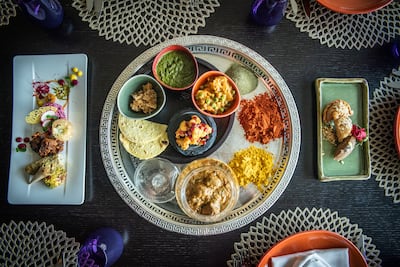
The curated Holi menu at this Taj Dubai restaurant includes both vegetarian and non-vegetarian options such as Samosa Rose Dahi Bhalla, Pani Puri and Sev Papdi, as well as an assortment of traditional home-made sweets and festive mocktails.
All guests will receive a commemorative takeaway gift. A festive photo booth has also been set up for those celebrating.
March 24 to 25, 6pm-midnight; Dh250 per person; Taj Dubai Business Bay; 04 438 3222
Varq's three-course Holi menu
The fine-dining Indian restaurant at Taj Exotica Resort & Spa, The Palm, has also prepared a special three-course menu for the festival.
From savoury delights to sweet treats, each dish is crafted with precision and passion, promising an unforgettable dining experience, the restaurant says.
Varq is run by the hotel's executive chef Sonu Koithara – who's cooked for everyone from Pele to Naomi Campbell and Bollywood royalty – and chef Sriram Aylur, who earned his first Michelin star at London’s Quilon in 2008.
March 25, 12pm-3pm and 6pm-11pm; Dh250 per person; Taj Exotica Resort & Spa, The Palm; 04 275 4444
Bombay Bungalow's Holi special for two
This Indian restaurant at The Beach in JBR, Dubai is offering a limited-edition Holi spread that's good for two people. Available for both lunch and dinner, the selection includes sweet and savoury snacks, such as the gujiyas and crispy Palak Patta Chaat.
The menu also features Special Soya Chaap Mandi, combining the mildly nutty flavours of soya chaap with aromatic cooked mandi rice.
March 21 to 25; Dh149 for two; The Beach, JBR; 800 692 8779
